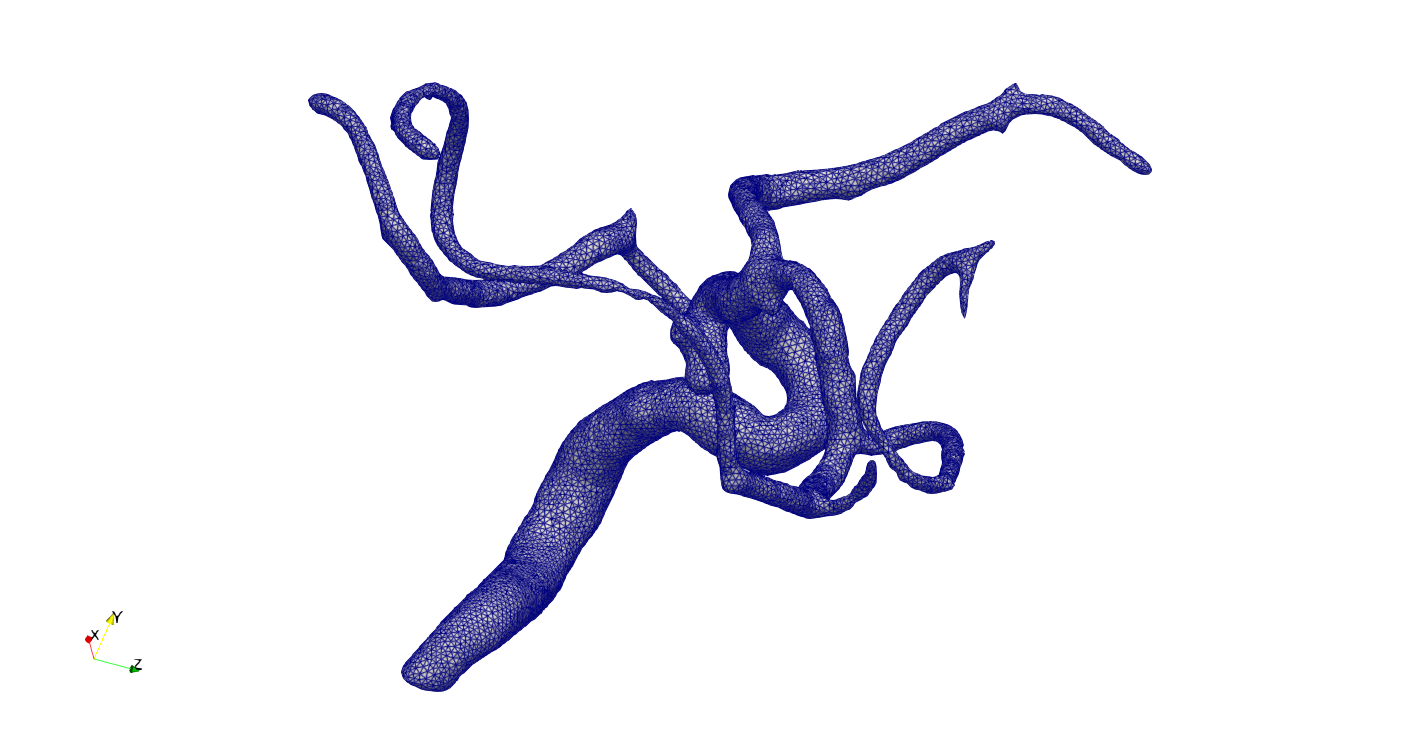🎄12 Days of HPC 2021
Modelling and simulation of blood flow as well as its interaction with surrounding tissues and medical implants
During the month of December we’re featuring blog posts from researchers from across the University of Leeds showcasing the fantastic work they do using our High Performance Computing system. Follow us @RC_at_Leeds to keep up to date with our 12 days of HPC blog series.
What’s your name?
Yongxing Wang
What department do you work in?
Computational Imaging & Simulation Technologies in Biomedicine (CISTIB) Group within the School of Computing
What research question are you trying to answer?
Optimisation of design or control in Fluid-Structure Interaction (FSI) systems is a very challenging problem. My vision is to provide a solid mathematical foundation and design robust computational methods for this type of problem, and further apply these methods to relevant problems emerging from biomechanics: such as optimal design of medical implants interacting with blood flow and surrounding tissues or optimal control of micro robots crawling through the human body to perform an operation or deliver a medicine.
What tools or technologies do you use in your research? (Programming languages, packages, APIs)
Python, C, Fortran, Matlab, pFEPG, FreeFEM++, TetGen, SciKit-learn, ChaosPy, TensorFlow, GID, Paraview,
How does HPC help your research?
scale up simulations
What is the potential impact of your research?
The main impact of my research will be to provide new scientific understanding and effective numerical methodologies for studying fluid-structure interaction mechanisms in biological systems, which will pave a way to a much deeper understanding of the mechanisms of many biological systems, such as animals locomotion, in the future. In addition, since it is increasingly likely that medical micro-robots could one day be swimming or crawling through the human body to carry out an operation or deliver a medicine, the proposed research will contribute new approaches to achieving accurate and optimal control in the design of such tiny robots. Since my research is highly relevant to modelling force and propulsion mechanisms in underwater objects, it could also assist engineers in designing more efficient underwater propellers.
In your personal opinion what’s the coolest thing about your research?
Understand biological systems and design medical implants through modelling and computing.
In your opinion, what is the ultimate Christmas song?
Jingle Bells
Postscript
Find us on Twitter @cistib and www.cistib.org to find out more about our groups research.





